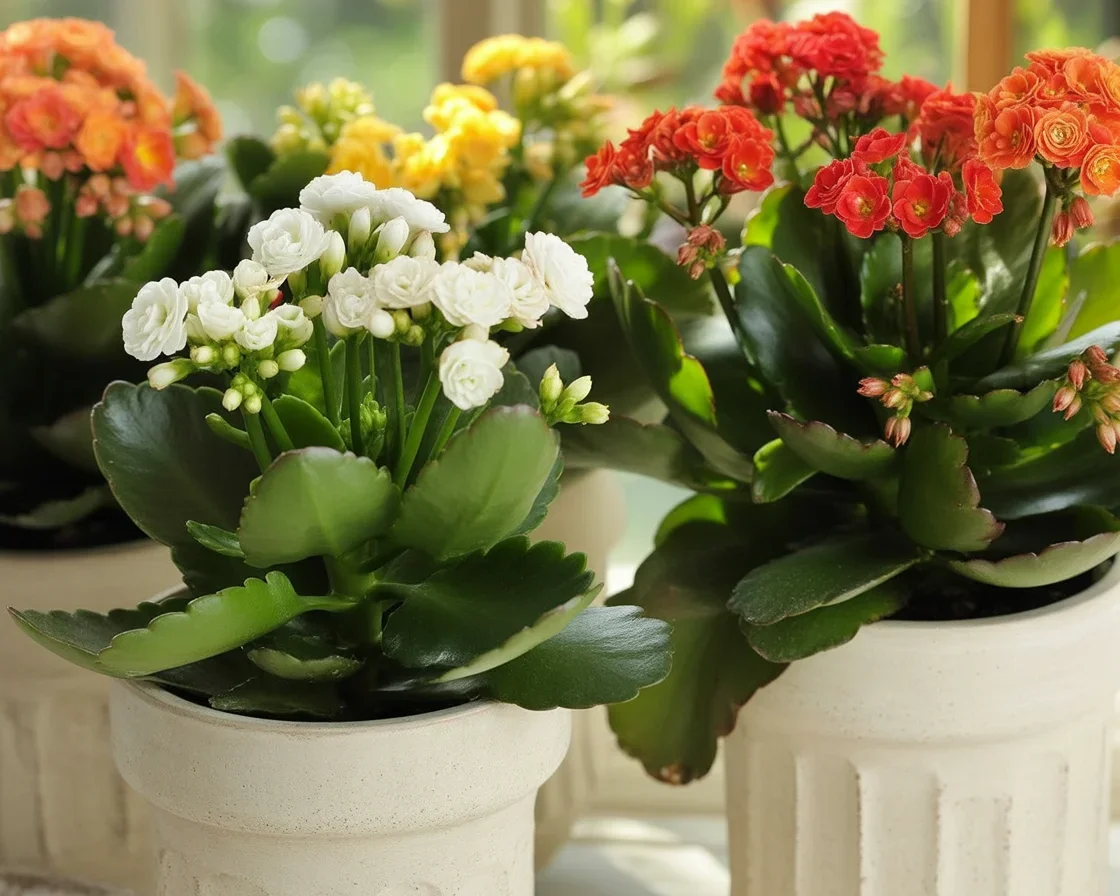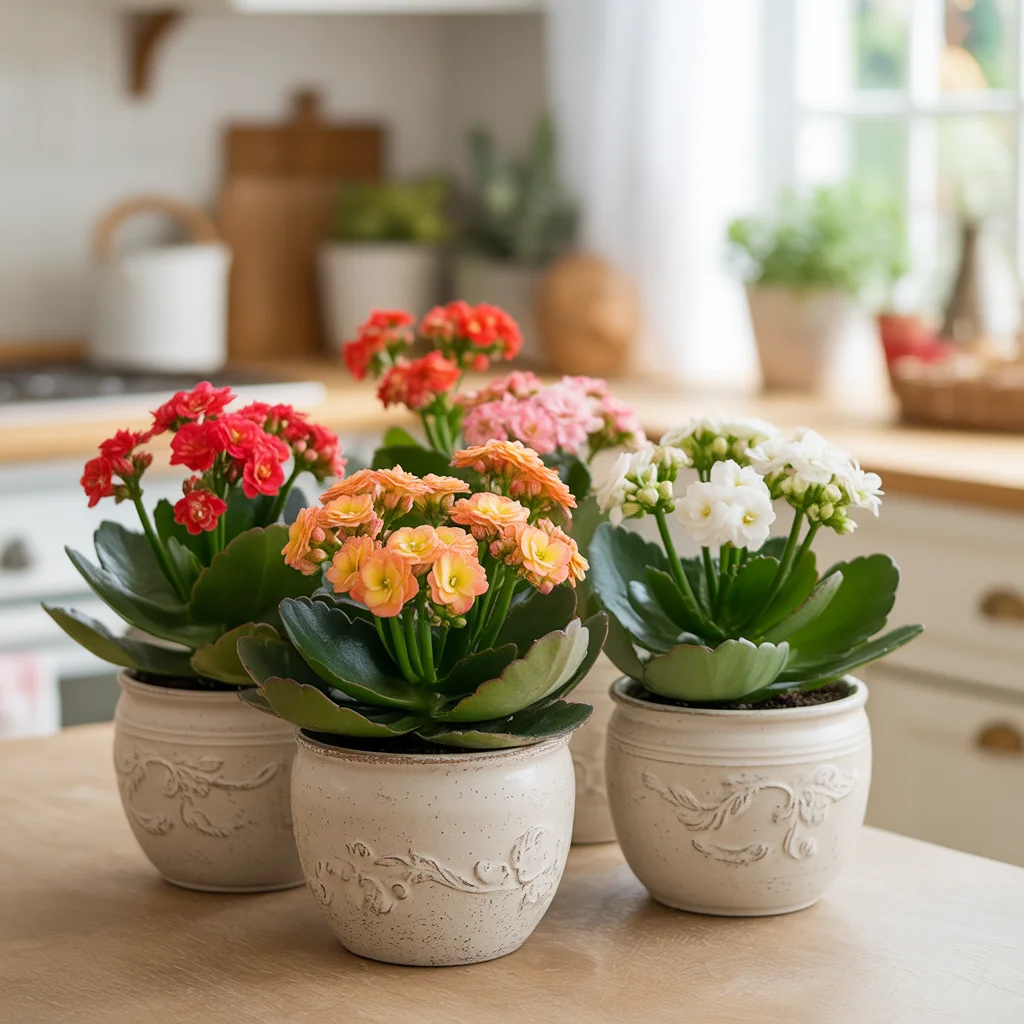Kalanchoe propagation can seem a little weirdly intimidating at first—I mean, who hasn’t bought one, hoped it would thrive, and then watched it slowly droop? I’ve totally been there, right alongside you, just staring and thinking, “Now what?” It turns out kalanchoe propagation is way easier than most folks think, and it’s honestly so much fun. If you’re eager to make more plants for yourself or friends, there’s no need to complicate things! For more on getting houseplants off to a good start, check out this guide to succulent care for beginners or how I tackled growing baby jade plants at home.
Table of Contents
How Does Kalanchoe Reproduce?
Okay, here’s the dirt (literally): kalanchoe reproduces from cuttings, which is just a fancy word for snipping off a bit of the plant, letting it root, and boom—a brand new plant. Wild, right? The cool thing about kalanchoe is it can also grow tiny plantlets on the edges of its leaves (like little babies clinging on for dear life). If you spot those, you’re already halfway to a fresh new plant.
The whole process works because kalanchoe contains a lot of moisture and energy in those fleshy leaves and stems. They really want to root and grow, as if they were programmed to take over your windowsill. So don’t overthink it, just give them the right conditions and some patience. Nature kind of takes it from there. 
What You’ll Need
You won’t need a five-star science lab. Just a couple of household tools, honestly. Grab a pair of clean scissors or pruning shears (I swear, don’t pull, just snip). Find a small pot or even a recycled yogurt container with drainage holes poked in. Potting mix is good, but you can even get away with a gritty succulent blend.
Some folks use rooting hormone—not strictly necessary, but it helps if you’re nervous. I’ve personally skipped it plenty of times and lived to tell the tale. And if you want to start your cutting in water, a glass or jar will do the trick. Oh, and keep a spot with bright, indirect light ready.
| Item | Why You Need It | Alternative | Nice to Have? |
|---|---|---|---|
| Sharp scissors/shears | Clean cuts help rooting | Sharp knife | Essential |
| Small pot/container | Holds soil or water | Yogurt cup with holes | Essential |
| Succulent potting mix | Stops rot, drains well | Regular mix plus sand | Recommended |
| Rooting hormone | Speeds up root growth | Skip it if you’re frugal | Optional |

Kalanchoe Propagation: Tools and Supplies
A lot of people get hung up on this—and I get it, nothing kills enthusiasm like a shopping list as long as a CVS receipt. But here’s my brutally honest advice: focus on the basics first. Go with simple containers, basic soil, and a healthy mother plant. Overthinking makes you less likely to actually start propagating, trust me.
If you want a fun trick, try using blush old mugs or egg cartons as mini nurseries. Just make sure it’ll drain—a swampy kalanchoe is a tragic sight, believe me.
“I followed these tips and in three weeks my little kalanchoe leaves had roots. Never thought plants could make me this giddy!” – Tanya J., Tulsa
How to Propagate Kalanchoe Successfully?
Here’s how I usually do it: Look for a firm, healthy leaf (not the limp ones that look like wet lettuce). Snip it off as clean as you can. Let that leaf or cutting sit out for a day or two, just chilling on the counter. Why? You want the exposed edge to form a callous, which helps stop rot.
After the edge dries up a little, press it into some slightly damp soil. Don’t waterlog it—just give it a little moisture and set it somewhere bright but not in the sun’s full blast.
In a few weeks, you’ll spot roots, maybe even tiny leaves. Seriously, don’t panic if nothing happens right away. Plants are weirdly stubborn about teasing you with their progress. Give it time and check every couple days for signs of growth.
Kalanchoe Care Tips Post-Propagation
This part’s key if you want your new kalanchoe babies to survive longer than a carton of milk. Keep the soil just a little bit moist—no flood zones needed. Let it dry out between waterings.
Bright, indirect light is your friend. If your new plant gets leggy, it probably needs more sunshine. Fertilize once it looks stable, but honestly, skip expensive stuff at first. These suckers thrive on tough love.
Will Kalanchoe Cuttings Root in Water?
Yes, they absolutely can! I’ve done it plenty of times when I ran out of soil or just wanted to make the process a little easier to watch. Just stick the cutting in a glass of water, change the water every few days, and wait for roots to appear.
Not all stems root as quickly as others. Sometimes a stubborn stubborn cutting just sits there, taunting you for weeks, but keep the faith. Once you spot little white roots, it’s time to move to soil.
How Do You Fix a Leggy Kalanchoe?
If your kalanchoe starts looking like it’s reaching for the stars, don’t panic. This is usually a sign it needs more light, or maybe you gave it too much fertilizer (happened to me last year, oops). Trim back the leggiest stems—don’t worry, the plant can handle it.
Move your kalanchoe somewhere brighter, like a sunny windowsill. You’ll be amazed at how quickly it perks back up. Leggy cuttings can be rooted again, so nothing really goes to waste. Besides, practicing on those stretch marks helps you get even better with kalanchoe propagation.
Common Questions
Will Kalanchoe cuttings root in water?
Kalanchoe is a succulent, and water propagation is not ideal. While it’s possible, the cuttings are more prone to rot. Instead, it’s better to let the cut end dry (callus) for 1–2 days, then plant it directly in well-draining soil.
What is the fastest way to propagate Kalanchoe?
The quickest and most reliable method is:
Take a healthy stem cutting (2–4 inches long).
Remove lower leaves and let the cutting dry for 24–48 hours.
Plant in cactus/succulent mix.
Keep in indirect light and mist occasionally until roots form (2–3 weeks).
Some Kalanchoe species (like K. daigremontiana) produce baby plantlets along the leaf edges — you can plant these directly in soil.
What can I add to water to make cuttings root faster?
If you’re water-rooting cuttings (not ideal for Kalanchoe), you can use:
Rooting hormone powder or liquid (dab on cutting before placing in soil).
A natural alternative: willow water, aloe vera, or diluted honey (all have mild rooting properties).
Avoid fertilizing until roots have formed.
Is a Kalanchoe plant indoor or outdoor?
Kalanchoe can be:
Indoors year-round, especially in cooler climates.
Outdoors in warm weather (USDA zones 9–11 or during summer). Just avoid frost, as it’s not cold-tolerant.
Should you deadhead Kalanchoe?
Yes. Deadheading (removing spent flowers) encourages the plant to:
Focus energy on new blooms.
Maintain a tidy appearance.
Potentially rebloom more quickly.
Use clean scissors or pinch off flowers at the base.
What do you do with a leggy Kalanchoe plant?
A leggy Kalanchoe needs pruning and more light:
Trim back long, stretched stems to encourage bushier growth.
Move it to a brighter location with at least 6 hours of light daily.
You can replant cuttings to create a fuller pot.
How long does it take for a kalanchoe cutting to root?
Usually about 2-3 weeks if you keep them moist and warm. Some take a little longer if your house is chilly.
Why did my cutting turn mushy?
Most likely too much water or not enough air circulation. Lay off the watering and let it dry out between sips.
Should I use rooting hormone every time?
Nope! It helps, but kalanchoe often roots well without it. Save your cash for that next plant haul.
Can I propagate from a flower stalk?
I wouldn’t. Flower stalks don’t root well. Stick to healthy leaves and stems.
Is direct sun okay for new cuttings?
Not right away! Give them bright but filtered light until they’re rooted and strong.
Give Kalanchoe Propagation a Go!
Listen, you really don’t need a green thumb to pull off kalanchoe propagation. With just a bit of patience and these straightforward tips, you’ll be swimming in baby kalanchoes before you know it. If you’re feeling stuck, pop over to this amazing forum, Kalanchoe… How to prop? : r/propagation for real life plant parent stories, or check out how others are handling beginner-friendly houseplant projects. There’s also a great beginner guide on leafy propagation tricks that you might find handy. Trust your instincts, embrace the process, and get your hands a little dirty—your home’s about to look a lot leafier, and you might just surprise yourself.
For more gardening tips follow us on Pinterest


